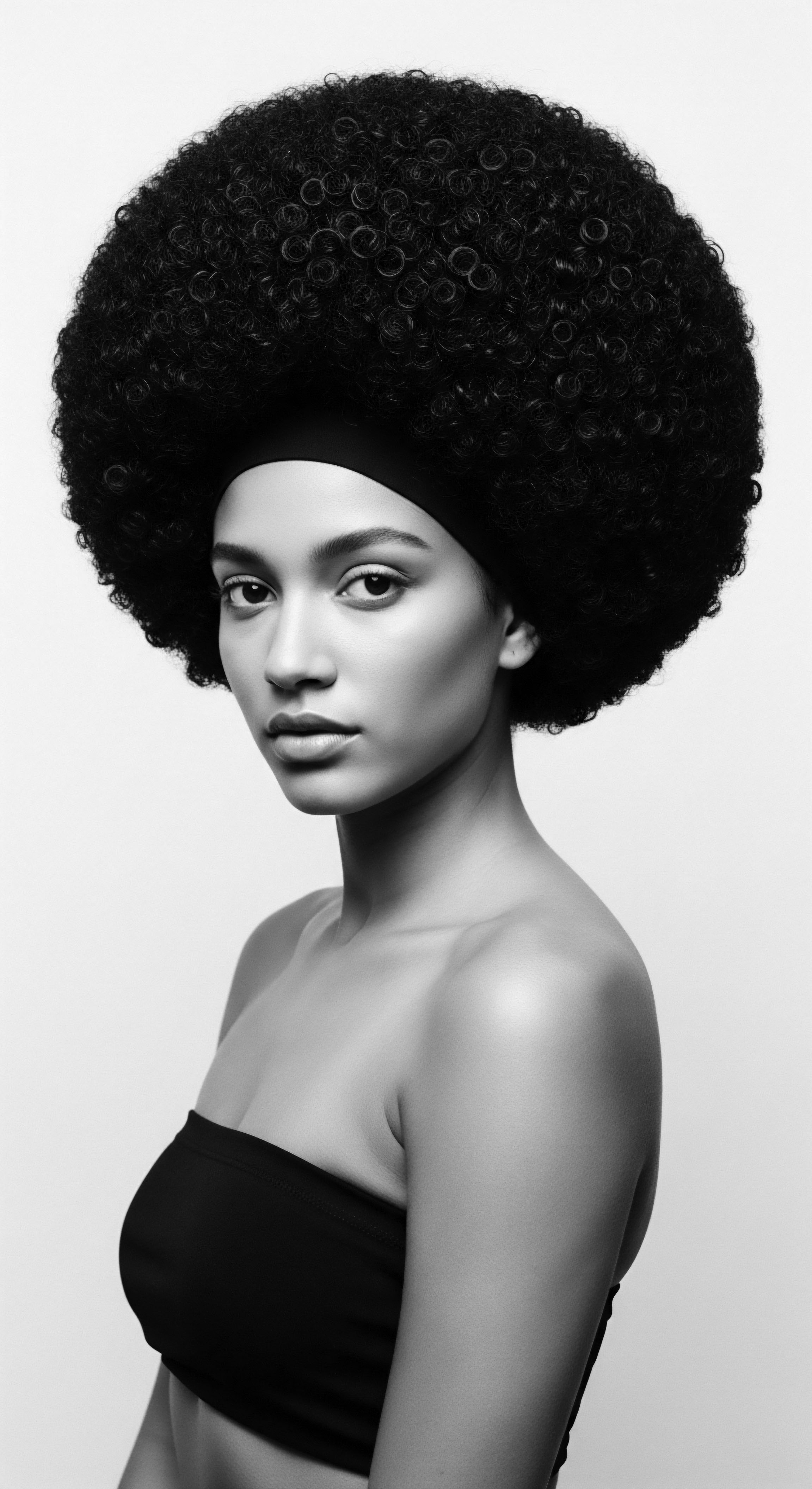
Fundamentals
The concept of Sleep Quality, a seemingly straightforward phrase, unfolds as a multifaceted tapestry when we consider its true definition. At its fundamental level, it represents far more than merely the absence of wakefulness; it embodies the rejuvenating power of rest, the profound restoration of mind, body, and spirit during slumber. This fundamental understanding acknowledges that sleep, in its deepest sense, serves as a cornerstone for physiological repair, cognitive consolidation, and emotional recalibration.
A night of profound rest allows cellular regeneration to take place, immune systems to fortify, and energy reserves to replenish, preparing the individual for the rigors and joys of the waking world. It is the very essence of human vitality, a silent, nightly resurgence that prepares us for new dawns.
Beyond the physiological, the meaning of Sleep Quality extends into the subtle realms of feeling and experience. It is the feeling of waking with clarity, the gentle unclenching of the jaw, the lightness in one’s step. It is the quiet confidence that accompanies a mind well-rested and prepared to meet the day’s demands. This delineation emphasizes that quality sleep is not solely measured by duration but by its restorative properties—how deeply one descends into its various cycles, how uninterrupted these cycles remain, and how refreshed one feels upon awakening.
For textured hair, this elemental biological process holds a deep, perhaps underestimated, importance, linking the internal harmony of the body to the external vibrancy of our crowns. The intricate physiological processes occurring during optimal rest directly influence the health and resilience of each strand, from scalp to tip, offering a glimpse into a foundational connection often overlooked in daily rituals.
Sleep Quality, at its core, signifies the profound restoration of mind, body, and spirit, crucial for both internal vitality and the external radiance of textured hair.
Ancestral wisdom, passed down through generations, has long intuitively grasped this connection, recognizing the holistic nature of well-being. Before the advent of modern science, communities understood that the body’s rhythms, including those of rest, were intricately linked to all aspects of health, including the strength and appearance of hair. This traditional knowledge often manifested in practices designed to promote restful states, whether through calming herbs, soothing rituals, or protective nighttime preparations for hair itself.
These customs served not just as practical solutions but as expressions of reverence for the body’s natural regenerative capacities. The daily or nightly preparations for hair, such as intricate plaiting or wrapping, were not merely cosmetic; they often served a dual purpose of preservation through periods of rest, minimizing tangles and breakage that could arise from restless slumber.
The initial exploration of Sleep Quality, therefore, begins with this basic appreciation ❉ it is the depth and effectiveness of rest that truly matters. For individuals with textured hair, this foundational understanding underscores a connection to our very biological blueprint, a reminder that the health of our hair is inextricably tied to the internal ecosystem of our bodies. This deepens our appreciation for the simple, yet powerful, act of going to sleep, reminding us that it is a period of vital renewal for every aspect of our being, including the beautiful, unique spirals and coils that frame our identities.
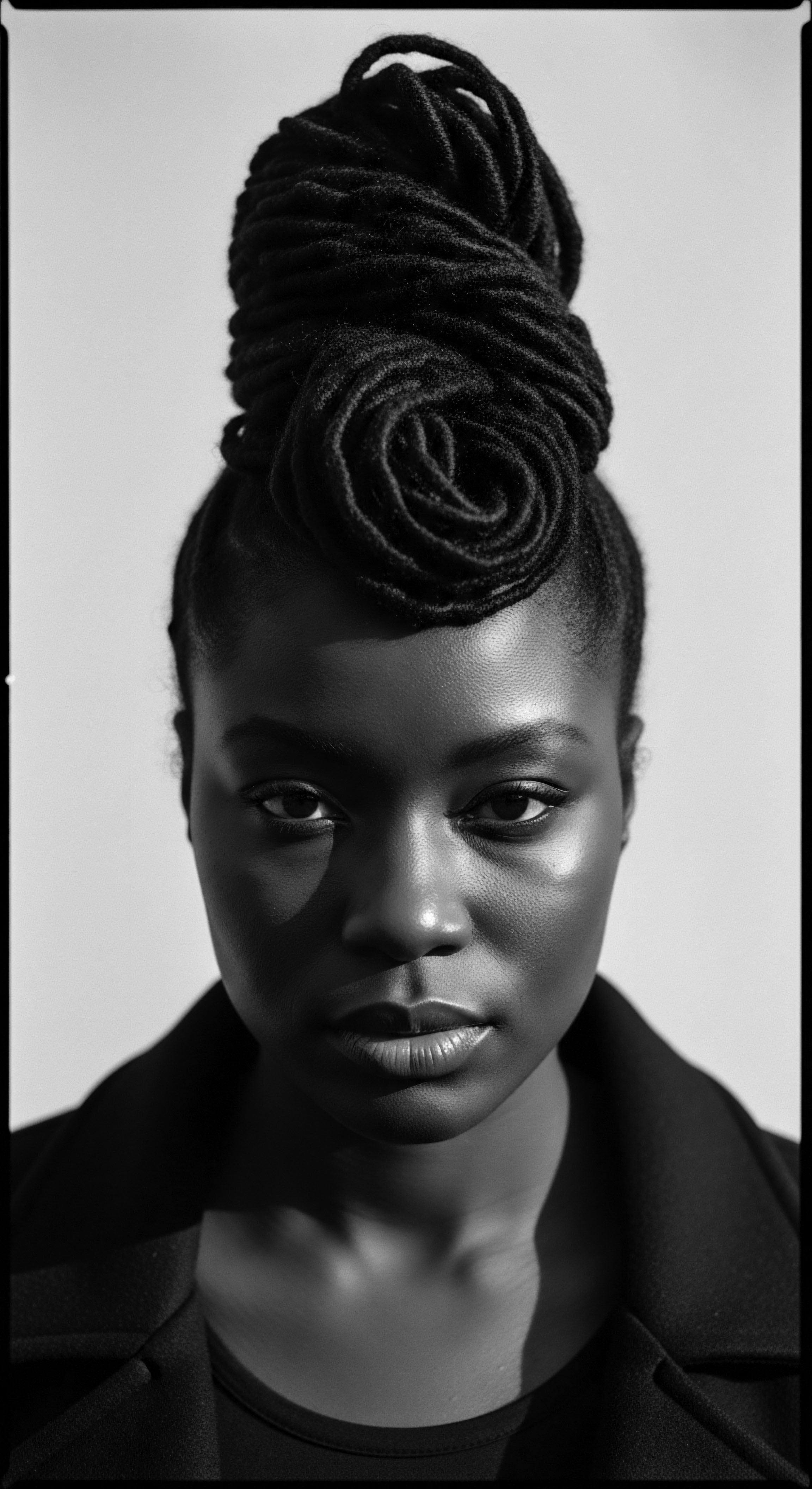
Intermediate
Moving beyond the basic definition, an intermediate understanding of Sleep Quality encompasses the various stages of sleep and the environmental, behavioral, and even psychological factors that influence their integrity. Sleep unfolds in cycles, each typically lasting around 90 minutes, progressing through non-rapid eye movement (NREM) sleep stages (N1, N2, N3—often referred to as deep or slow-wave sleep) and culminating in rapid eye movement (REM) sleep. Each stage possesses its unique restorative properties ❉ NREM sleep is vital for physical recuperation and tissue repair, while REM sleep plays a pivotal role in emotional regulation, memory consolidation, and learning.
When sleep quality is compromised, these crucial stages are disrupted, leading to a cascade of negative effects on overall health, energy levels, and, pertinently, the vibrancy of textured hair. The explanation for these interconnected processes lies in the delicate balance of physiological functions that flourish during periods of profound rest.
Consider the impact of consistent, undisturbed sleep on cellular processes. During deep NREM sleep, the body actively repairs and regenerates cells. This process extends to the very follicles of our hair, where blood flow increases and growth hormones are released. A sustained lack of quality sleep can hinder these essential restorative functions, potentially leading to weakened strands, increased shedding, and a dulling of the hair’s natural sheen.
For textured hair, which often possesses a more delicate structure prone to dryness and breakage, these internal disruptions become particularly pronounced. The very architectural integrity of a coil or curl depends on a continuous supply of nutrients and robust cellular health, all of which are bolstered by consistent, good quality rest. This connection between the unseen internal processes of sleep and the visible manifestations of hair health forms a deeper interpretation of its significance.
- Restorative Cycles ❉ Deep NREM sleep facilitates cellular repair and growth, directly affecting hair follicle health.
- Hormonal Balance ❉ Proper sleep regulates hormones essential for hair growth and scalp vitality.
- Reduced Stress ❉ Quality sleep helps mitigate stress hormones, which can otherwise contribute to hair thinning and loss.
- Nutrient Delivery ❉ Enhanced blood circulation during rest ensures optimal nutrient delivery to hair follicles.
The influence of environmental factors on Sleep Quality cannot be overstated, especially when considered through the lens of textured hair care and heritage. A cool, dark, quiet sleep environment is generally considered optimal, yet historical realities and contemporary disparities have often denied such conditions to Black and mixed-race communities. For centuries, ancestral practices adapted to these environmental challenges, devising ingenious ways to protect hair during periods of fragmented or less-than-ideal rest.
Headwraps, bonnets, and specific nighttime plaiting styles emerged not just as aesthetic choices but as practical defenses against friction, moisture loss, and external elements encountered even during sleep. These customs represent a profound ancestral understanding of hair preservation, a testament to resilience and ingenuity in the face of environmental constraints.
Environmental factors, deeply interwoven with historical realities, profoundly shape Sleep Quality and ancestral hair protection methods within Black and mixed-race communities.
Behavioral practices also play a substantial role in shaping sleep’s restorative capacity. The winding down rituals before bed, the avoidance of stimulants, and the establishment of a consistent sleep schedule all contribute to a higher quality of rest. When we consider the historical context of hair care for textured hair, these behaviors often intertwined with communal practices. Storytelling, shared grooming rituals, and quiet moments of familial connection often preceded sleep, creating a soothing environment that fostered mental and emotional repose.
These weren’t merely social interactions; they were often deliberate, calming acts that prepared the mind and body for the essential restorative processes of the night, inadvertently contributing to the well-being of the hair as well. The ancestral knowledge of these pre-sleep practices, passed down through generations, highlights a holistic approach to self-care that understood the interconnectedness of rest, community, and personal presentation.
This intermediate interpretation of Sleep Quality reveals a layered interaction between our internal biology, our external environment, and our learned behaviors. For individuals tending to textured hair, it means understanding that the vibrancy, strength, and overall appearance of their hair are not isolated phenomena but are deeply dependent on the unseen, yet powerful, work performed during periods of sound slumber. The care taken to prepare hair for the night becomes a conscious extension of this understanding, a modern echo of ancient practices designed to honor and protect the unique heritage that sits atop our heads.
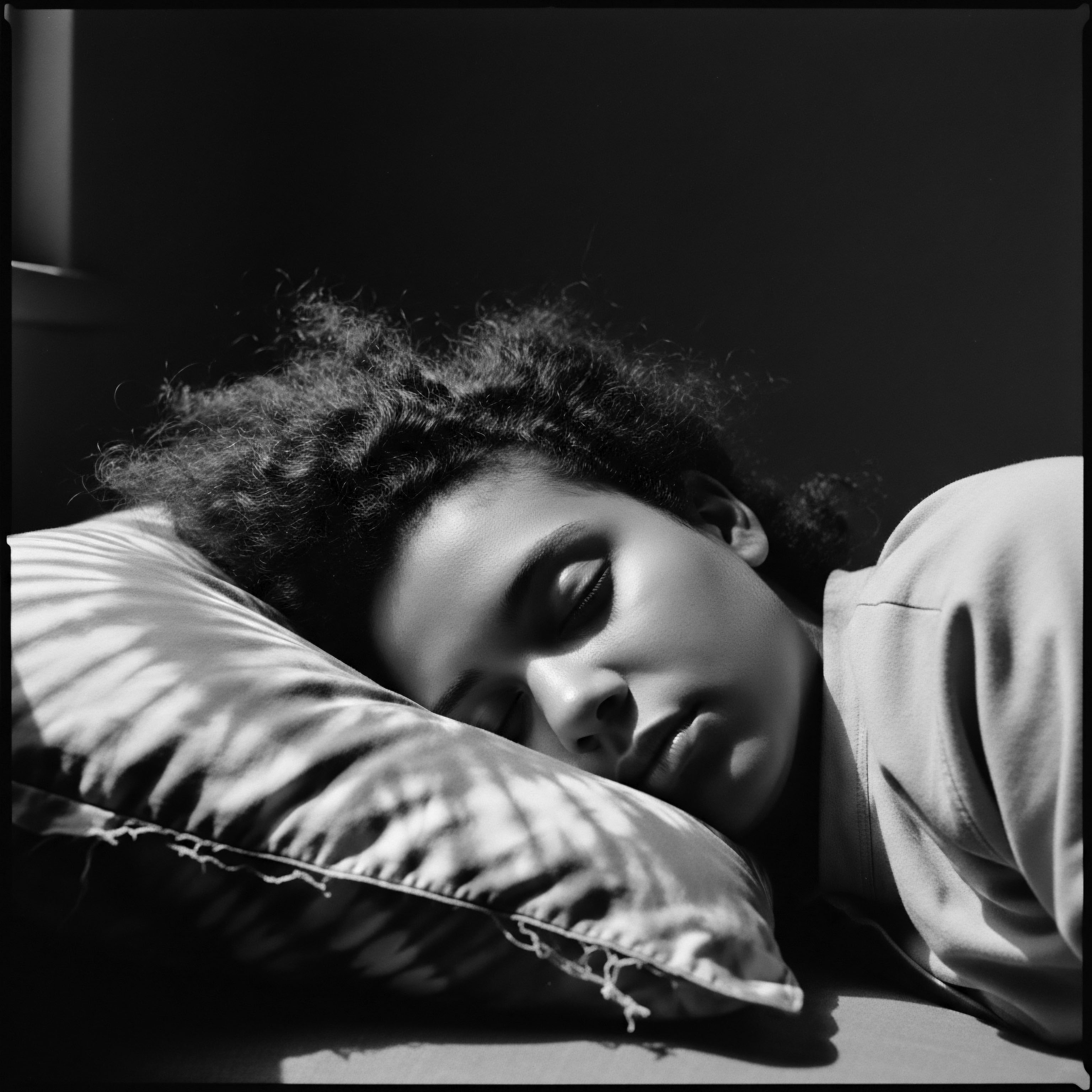
Academic
The academic delineation of Sleep Quality moves beyond mere observation to a rigorous, empirically grounded understanding, integrating neurophysiological, psychological, and sociological dimensions. It is defined not solely by polysomnographic measures such as sleep onset latency, wakefulness after sleep onset, sleep efficiency, and the precise architecture of sleep stages (N1, N2, N3 slow-wave sleep, and REM), but also by subjective measures of perceived restfulness, daytime functioning, and overall well-being. A high degree of sleep quality indicates an optimal progression through these stages, sufficient time spent in restorative deep sleep, and minimal disruptions, all contributing to an individual’s cognitive acuity, emotional resilience, and physiological homeostasis. This comprehensive explanation requires a nuanced understanding of its complex interplay with human systems, underscoring its import across various aspects of human existence.
From a neurobiological standpoint, quality sleep orchestrates a symphony of processes essential for brain health, including glymphatic system clearance of metabolic waste products, synaptic plasticity for learning and memory consolidation, and the regulation of neurotransmitters like serotonin and dopamine, which profoundly affect mood and motivation. Any impairment in these nocturnal functions—whether due to sleep disorders such as sleep apnea or insomnia, or to chronic environmental stressors—precipitates a systemic dysregulation with far-reaching consequences. For the integumentary system, including the scalp and hair follicles, compromised sleep quality translates into attenuated cellular repair, reduced collagen synthesis, and diminished localized blood flow, all of which are fundamental to the robust growth and maintenance of healthy hair. This understanding underscores the biological depth of the meaning of truly restorative rest.
| Sleep Stage / Aspect NREM (Deep Sleep) |
| Physiological Process During Optimal Sleep Increased growth hormone release, cellular repair, tissue regeneration, enhanced blood flow to follicles. |
| Implication for Textured Hair (Ancestral & Modern) Ancestral Wisdom ❉ Intuitive recognition of 'rest for growth,' visible in flourishing hair after periods of respite. Modern Science ❉ Direct correlation with follicle health, strand strength, and reduced breakage. |
| Sleep Stage / Aspect REM Sleep |
| Physiological Process During Optimal Sleep Brain activity for emotional processing, memory consolidation, stress reduction. |
| Implication for Textured Hair (Ancestral & Modern) Ancestral Wisdom ❉ Holistic practices for mental peace before sleep, believed to promote overall vitality. Modern Science ❉ Reduced stress hormones (cortisol) indirectly supports hair health by mitigating inflammation and premature shedding. |
| Sleep Stage / Aspect Uninterrupted Cycles |
| Physiological Process During Optimal Sleep Optimal progression through all sleep stages without disturbance. |
| Implication for Textured Hair (Ancestral & Modern) Ancestral Wisdom ❉ Creating peaceful sleep environments, recognizing sacredness of night rest. Modern Science ❉ Ensures full execution of restorative processes, preventing stress on hair and scalp, crucial for delicate textured strands. |
| Sleep Stage / Aspect The profound link between the unseen mechanics of sleep and the tangible health of textured hair remains a timeless testament to inherited wisdom and scientific discovery. |
The true gravity of Sleep Quality’s connection to textured hair heritage emerges when we examine the historical and enduring realities faced by Black and mixed-race communities. Systemic oppression, including the brutal institution of chattel slavery and its lingering socio-economic repercussions, profoundly impacted sleep patterns and the ability to engage in consistent, restorative self-care. Sleep was often fragmented by forced labor, surveillance, and chronic anxiety, denying individuals the very conditions necessary for physical and mental recuperation. Yet, within these harsh realities, the preservation of hair, a potent symbol of identity, resilience, and connection to ancestral lands, became a paramount act of self-worth and resistance.
A particularly illuminating instance stems from the historical accounts of Black women during and immediately following slavery in the United States. Despite the pervasive lack of control over their bodies, labor, and rest, maintaining their hair became a quiet, yet profound, act of self-affirmation. While scientific metrics of “sleep quality” as we understand them today were absent, the ancestral knowledge of how to preserve delicate hair structures through the night was a testament to a deep-seated understanding of its vulnerability.
Consider the widespread, though largely undocumented in formal academic texts of the time, practice of tightly plaiting or braiding hair before sleep, or covering it with rudimentary cloths or headwraps made from salvaged materials. This was not a luxury; it was a strategic imperative to minimize friction and tangling during restless sleep, born of exhausting days and often disturbed nights.
The practice of protective nighttime hair styling by enslaved and post-emancipation Black women exemplifies an ancestral understanding of hair preservation despite profoundly compromised sleep quality.
This ancestral practice, meticulously observed even under duress, powerfully illuminates Sleep Quality’s connection to textured hair heritage. An academic lens reveals that this seemingly practical act transcended mere utility, embodying a deep cultural and psychological significance. The limited time available for hair care, often relegated to the brief, precious hours before dawn or after dusk, necessitated practices that maximized hair preservation during sleep. The very existence of these enduring night rituals – from rudimentary plaiting to the eventual evolution of more specialized bonnets and scarves – testifies to an ancestral understanding of how vital protecting hair during periods of rest was for its long-term health and manageability.
Even when restorative sleep itself was denied by oppressive systems, the act of preparing hair for the night was a silent, powerful affirmation of self, a reclaiming of agency over one’s own body and heritage. This enduring commitment to nighttime hair protection is a legacy that continues to resonate today, underscoring the deep value placed on healthy textured hair across generations.
The implications for Sleep Quality within textured hair experiences extend into contemporary public health and socio-economic disparities. Research has consistently demonstrated that marginalized communities often face higher rates of sleep disruption due to factors such as environmental noise, insecure housing, chronic stress, and disproportionate exposure to shift work (Jackson et al. 2013). These systemic stressors directly impact sleep quality, exacerbating issues for textured hair that require specific care routines.
For instance, the very act of maintaining intricate protective styles, which can take hours, often requires significant time and financial investment. If sleep quality is already poor due to external factors, the additional physiological stress compounds the challenge of achieving vibrant hair health. The cyclical relationship becomes clear ❉ poor sleep impacts overall health, including hair; demanding hair routines can further compromise sleep, especially if time constraints force late-night care; and historical/contemporary inequities perpetuate both.
Moreover, academic inquiry into the meaning of Sleep Quality for textured hair must acknowledge the psychological burden often associated with hair presentation in society. For Black and mixed-race individuals, hair can be a site of both immense pride and profound vulnerability, frequently subjected to scrutiny and judgment. This external pressure can generate chronic stress, which, in turn, disrupts sleep architecture. The emotional labor involved in navigating societal expectations for textured hair can manifest as heightened cortisol levels, impacting sleep efficiency and duration.
A lack of restorative sleep then further compromises the hair’s health, potentially leading to a frustrating cycle where stress-induced poor sleep impacts hair, which then causes more stress. The delineation here points to a deeply interconnected system where personal well-being, cultural identity, and physiological processes are inextricably linked.
Understanding Sleep Quality from an academic perspective, therefore, means recognizing its embeddedness within broader socio-historical and psychological contexts, particularly for textured hair. It is not merely a biological phenomenon but a deeply human one, shaped by ancestral legacies of resilience, ongoing systemic challenges, and the profound connection between self-care and identity. The scholarly examination of Sleep Quality in this context calls for interdisciplinary approaches, drawing from sleep science, public health, sociology, and cultural studies, to fully grasp its comprehensive meaning and its enduring influence on the health and heritage of Black and mixed-race hair.
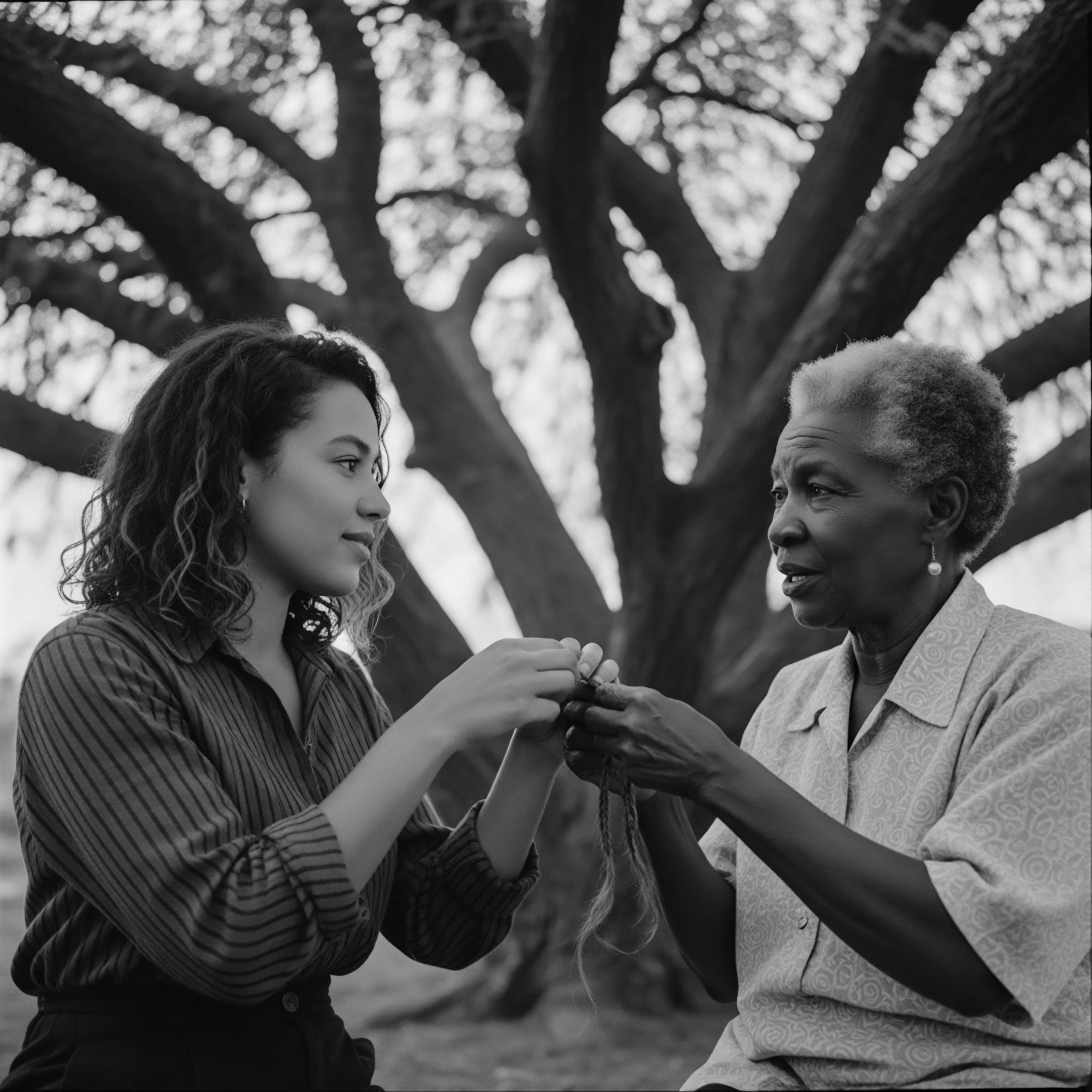
Reflection on the Heritage of Sleep Quality
As we close this contemplation of Sleep Quality, its echo resounds far beyond the quiet chambers of night. It is a profound meditation on textured hair, its heritage, and its care, presented as a living, breathing archive, always remembering its journey from elemental biology and ancient practices, through the living traditions of care and community, to its role in voicing identity and shaping futures. The understanding of restful slumber, passed down through generations, underscores a timeless truth ❉ the deepest care for our crowns begins within, in the sanctuary of repose. The gentle wisdom of our ancestors, who shielded their coils with meticulous care even when sleep itself was a precarious luxury, reminds us that protection and preservation are acts of profound reverence.
The rituals performed under the cloak of night, whether the rhythmic plaiting of hair or the careful wrapping in textiles, were not just practical measures; they were sacred acts of self-preservation and continuity. These practices, born of necessity and wisdom, cultivated a legacy of care that informs our routines today. They whisper stories of resilience, of beauty cherished despite adversity, and of an unwavering connection to heritage that even the deepest slumber could not sever. The quality of sleep, then, becomes a powerful lens through which to behold this enduring legacy—a testament to how deeply our physical well-being intertwines with our cultural identity.
As Roothea, we stand at the nexus of ancient wisdom and modern inquiry, recognizing that the health of textured hair is not merely a cosmetic concern but a holistic reflection of our inner peace and our ancestral journey. The conscious cultivation of restorative sleep, therefore, transforms into an act of honoring this heritage, a deliberate decision to imbue our strands with the vitality they deserve. The ‘Soul of a Strand’ ethos finds its truest expression here, in the quietude of night, where each coil and curl is renewed, ready to unfurl its story, strengthened by the deep, restorative currents of ancestral wisdom and well-being.
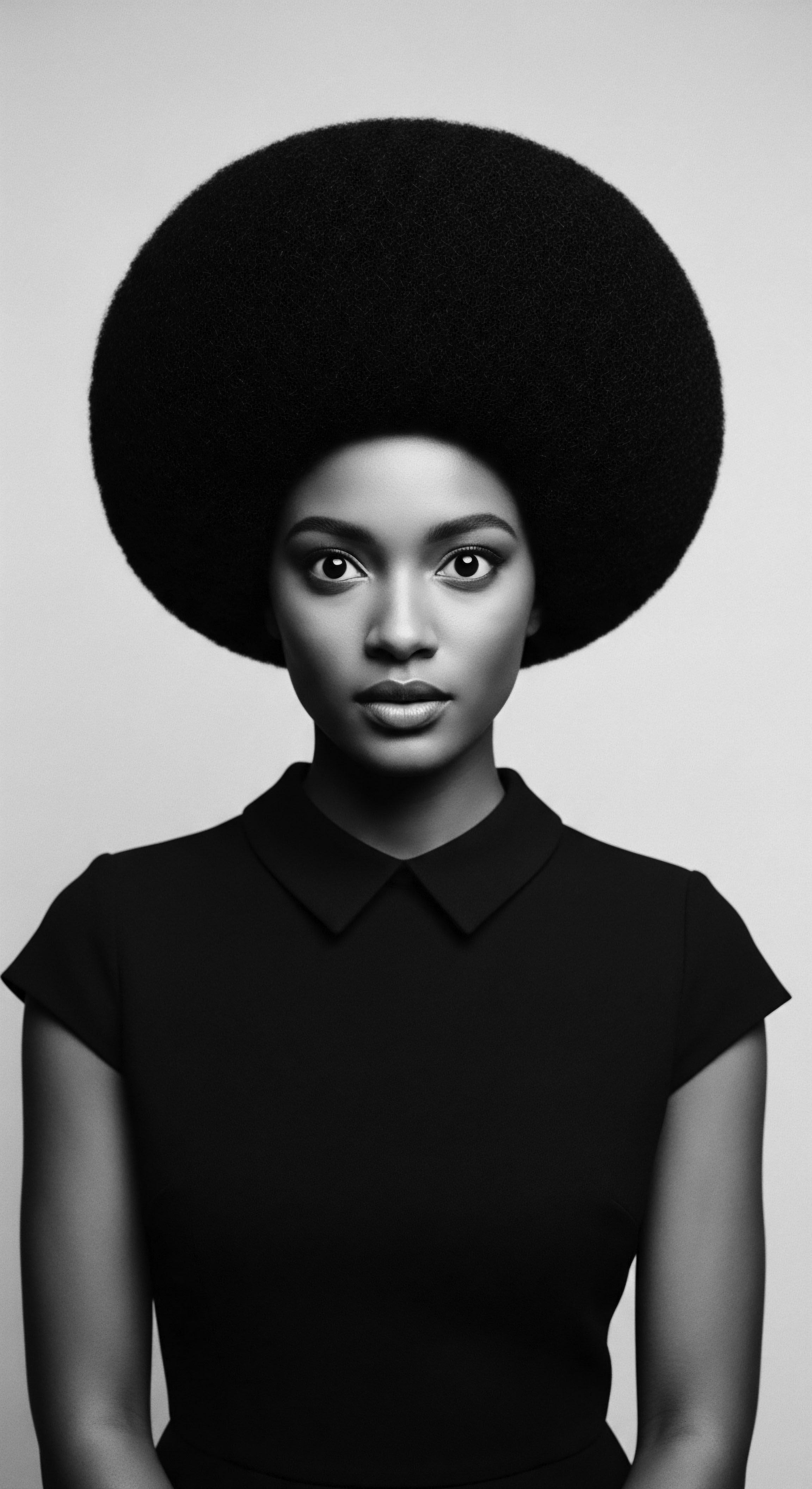
References
- Jackson, C. L. et al. (2013). Socioeconomic Status and Sleep Health ❉ Racial/Ethnic and Sex Differences. Annals of the New York Academy of Sciences, 1292(1), 110-120.
- Morgan, H. (2014). The Hair of the Dog ❉ Hair Care, Identity, and the African American Experience. University of California Press.
- White, S. (2015). The African Roots of War ❉ Culture, Identity, and the Politics of Hair. University of Illinois Press.
- Hooks, B. (1992). Black Looks ❉ Race and Representation. South End Press.
- Walker, A. (1983). In Search of Our Mothers’ Gardens ❉ Womanist Prose. Harcourt Brace Jovanovich.
- Ogunsanya, A. (2013). Hair in African Cultures ❉ A Study of Social and Cultural Significance. Palgrave Macmillan.
- Kripke, D. F. (2010). Sleep and Health ❉ An Epidemiological Approach. Springer.
